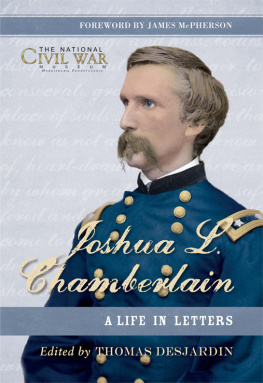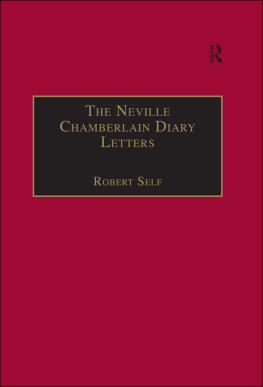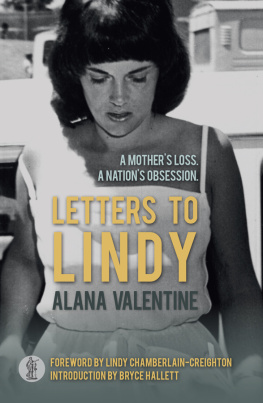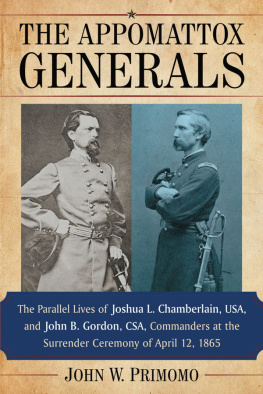Joshua L. Chamberlian
 A LIFE IN LETTERS
A LIFE IN LETTERS
In fond memory of NCWM Board Member Jim Scheiner, at whose encouragement this project was undertaken.
Joshua L. Chamberlian
 A LIFE IN LETTERS
A LIFE IN LETTERS
The
PREVIOUSLY UNPUBLISHED LETTERS of a GREAT LEADER of the CIVIL WAR
Edited by
THOMAS DESJARDIN
Contents
Foreword
W ith the publication of Michael Shaaras novel The Killer Angels in 1975, Joshua Lawrence Chamberlain began his ascent to the stature of a Civil War icon. As colonel of the 20th Maine Volunteer Infantry during the Battle of Gettysburg, Chamberlain commanded the regiments defense of the left flank of the Army of the Potomac against a determined Confederate attack on Little Round Top during the late afternoon of July 2, 1863. After repelling several spirited Confederate assaults, the 20th Maine ran out of ammunition. One more enemy assault was likely to overrun the position. Undaunted, Chamberlain led a bayonet charge that drove off the attackers and captured many of them. For his courage and leadership, Chamberlain was later awarded the Medal of Honor.
During his three years of service in the Civil War, this former college professor was wounded six times (once almost fatally), had six horses shot under him, was promoted to brevet major general, and commanded the Union detachment that received the official surrender of arms and colors from the Army of Northern Virginia at Appomattox. Until the appearance of The Killer Angels, however, only the most dedicated students of the Civil War had heard of Chamberlain. Few visited the 20th Maine monument at Little Round Top, which was hard to find. But all of that began to change after 1975, when author Michael Shaara made Chamberlain one of his main protagonists in The Killer Angels. The 20th Maine Monument became one of the most visited sites at Gettysburg National Military Park. Chamberlains story inspired an interest in the Civil War by documentary filmmaker Ken Burns, whose 1990 television series The Civil War, which prominently featured Chamberlain, has been viewed by more than 40 million people. The movie and television miniseries Gettysburg, based on The Killer Angels, gave Chamberlain even greater exposure. In the 1990s, a small bronze statuette of Chamberlain, advertised in Civil War magazines, became a best-selling item in the repertory of Civil War generals next only to Robert E. Lee. Several biographies of Chamberlain have appeared in the past thirty years.
Chamberlain is an appealing hero. Although thirty-three years old and married with two children, he left his professorship at Bowdoin College to enlist in the Union army in the summer of 1862. He explained that decision to his beloved wife Fannie in a letter included in this volume. There are things worth more than life and peace, he wrote to her. Nationality the Law of Liberty, public and private honor are worth far more, and if the Rebels think they are fighting for all that men hold dear, as I suppose some of them really think they are, we are fighting for more, we fight for all the guaranties of what men should love, for the protection and permanence and peace of what is most dear and sacred to every true heart. That is what I am fighting for at any rate, and I could not live or die in a better cause.
After he had almost died for this cause, shot through both hips leading his brigade at Petersburg on June 18, 1864, he came back for more, even though he had not fully recovered from that wound. When he returned to his brigade at the end of the year, his mother tried to persuade him to change his mind. Surely you have done & suffered & won laurels enough in this war, she pleaded. He replied that I am not scared or hurt enough yet to be willing to face the rear when other men are marching to the front. To return was the only course which honor and manliness prompt. Surviving another potentially serious wound at White Oak Road on March 31, 1865, he fought through the rest of the campaign to Appomattox.
Elected overwhelmingly to four consecutive terms as governor of Maine after the war, Chamberlain then returned to Bowdoin as its president. Despite constant pain and debility from his Petersburg wound, he lived to help plan the fiftieth anniversary commemoration of the Battle of Gettysburg in 1913 and died the following year at the age of eighty-five.
The letters in the first half of this volume cover the years from 1849 to the outbreak of the Civil War, during which Chamberlain was a student at Bowdoin and at Bangor Theological Seminary, and then an instructor and professor at Bowdoin. They are mainly love letters between Lawrence and Fannie (Frances Caroline Adams), whom Chamberlain married in 1855. Several important war letters occupy the second section of the volume, followed by many letters to Chamberlain in 1880 when, as commander of the state militia, he skillfully mediated a potentially ugly armed conflict over a disputed state election.
The originals of all but three of the letters are housed at the National Civil War Museum in Harrisburg, Pennsylvania. They have never before been published or cited by historians or biographers. They provide important new information and insights on Chamberlain of great value to historians of the Civil War era. Their publication is especially welcome during these years of commemoration of the Civil War sesquicentennial. We owe a debt of gratitude to The National Civil War Museum for making them available in this format and to Tom Desjardin for his skillful editing of the collection.
James McPherson
Autumn 2011
Introduction
The National Civil War Museum is pleased to bring this wealth of material out of its secure home in the Archive stacks and offer it for the edification of Chamberlain enthusiasts, Civil War buffs, and scholars worldwide. It is our belief that this unique collection of letters and documents will provide new insights into one of the Civil Wars most compelling historical figures. In addition, it is our hope that it will help spark enthusiasm in a new generation for the unlimited lessons the American Civil War and its complex cast of characters can teach us.
About the Chamberlain Collection
The bulk of the Chamberlain Collection came to the Museum by way of artist Don Troiani, who had acquired it from descendants of the Chamberlain family. Although Joshua Chamberlain has no living direct descendants, his papers and personal items have been donated to various collections by descendants of his sister Sarah (fondly known as Sae) and by other indirect heirs. Several other Chamberlain documents were collected by the Museum from various sources. All together, the collection totals more than 250 letters, documents, and artifacts directly related to Joshua Lawrence Chamberlain. Although it primarily consists of his personal correspondence with his wife Fannie from before the Civil War through his years as governor of Maine after the war, it also includes his commission to major general of the Maine State Militia, telegrams, official correspondence, and








 A LIFE IN LETTERS
A LIFE IN LETTERS
